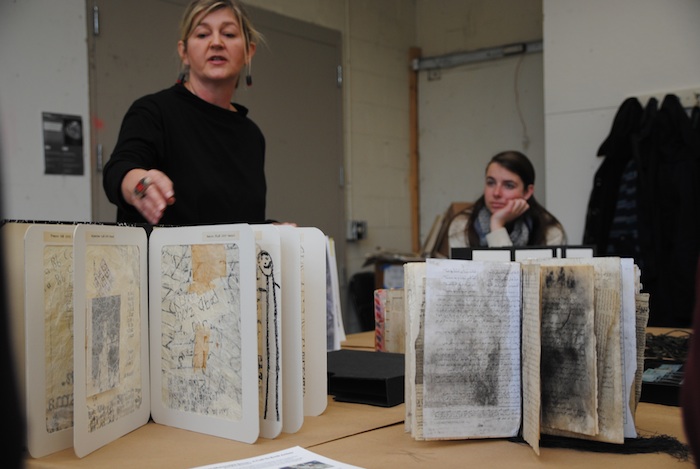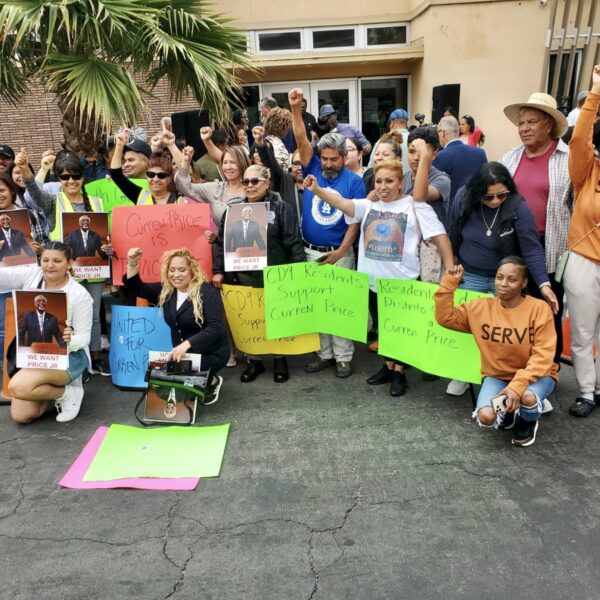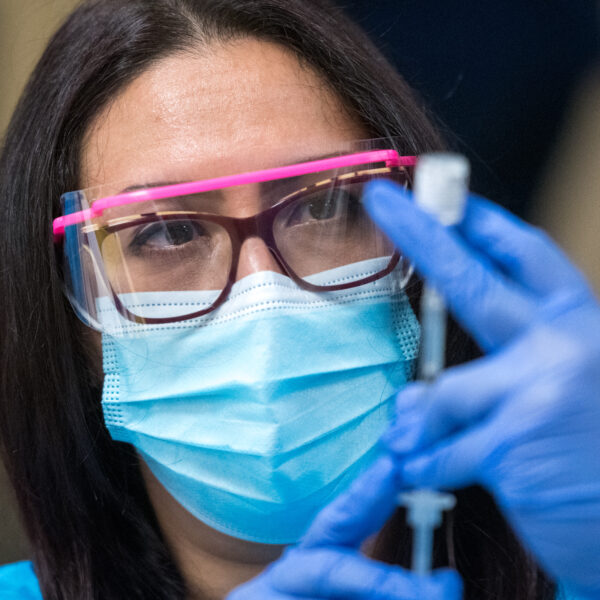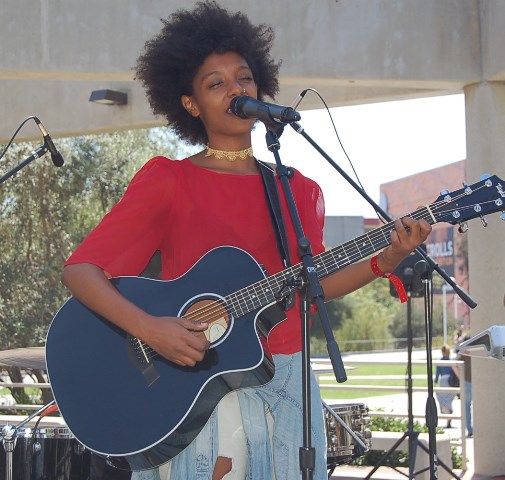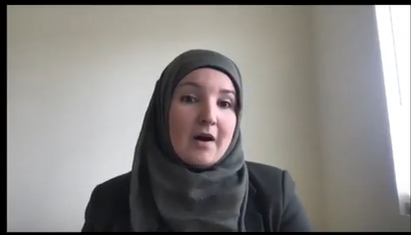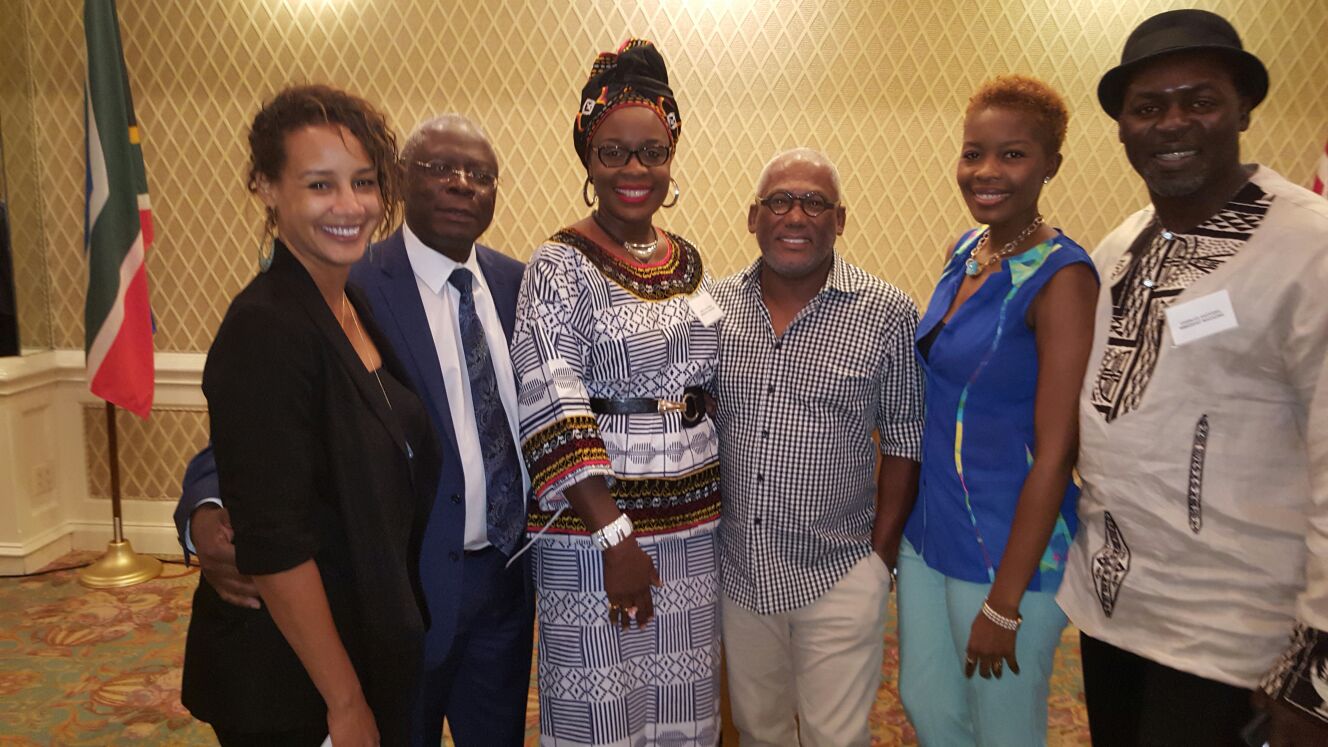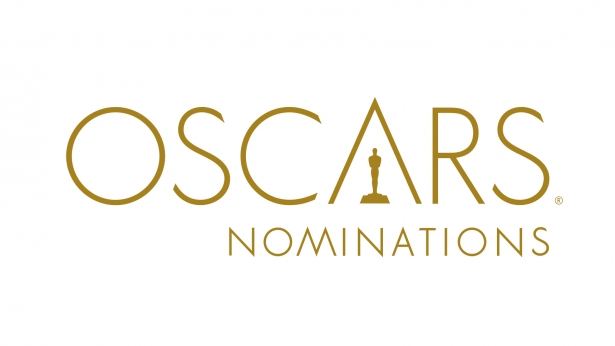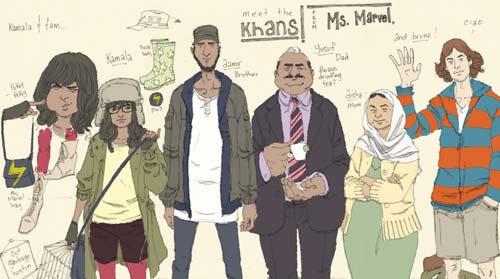TIM, The Immigrant Experience, Heritage, Nadine Wiley
Standing in front of a group of wide-eyed Boston Museum of Fine Arts (MFA) students, Polish-born artist Ania Gilmore coddles a book that starts on both sides called a dos-à-dos book. It’s constructed of envelopes that serve as a painful reminder to Gilmore and her family of the era of martial law that took place in Poland during the early 1980’s.
“When you have letters as your only connection to your family, you read their letters over and over again,” says Gilmore in reference to the martial law era that restricted her mother’s return to Poland.
“From the age of twelve until I was an adult, the only communication that I had with my mother was by phone or mail. The government monitored our calls, and if they heard you speaking about something that they didn’t like, they would disconnect the call.”
 The wax paper-preserved envelopes in the book also symbolize a critical piece of Gilmore’s journey as an artist. Gilmore, an internationally recognized book artist, entered her dos-à-dos book into a traveling art show in Poland that reached twenty-five cities.
The wax paper-preserved envelopes in the book also symbolize a critical piece of Gilmore’s journey as an artist. Gilmore, an internationally recognized book artist, entered her dos-à-dos book into a traveling art show in Poland that reached twenty-five cities.
Some people at the show cried when they saw the stamps that were on the envelopes,” says Gilmore. Gilmore explained that the stamps are unique to the martial law era when people were treated very harsh and many lost loved ones.
Polish stamps during this era were inscribed with the words Poczta Polska; which symbolizes the People’s Republic of Poland. The stamps featured: communist leaders, soldiers, military vehicles, and buildings in ruin.
In the classroom, the sound of the rain pattering and the loud heat blowing failed to distract the fifteen students leaning in on their artist stools with watery eyes.
MFA Professor Jesseca “cq” Ferguson, who teaches the class, sits at the corner of the presentation table admiring Gilmore’s work and chiming in from time to time.
“Ania’s books are very sculptural,” says Ferguson. “They have a physical presence.”
Gilmore met Ferguson in Poland during as show she was curating titled “Correspondence.”
Afterwards, Ferguson invited Gilmore to present her book art and graphic designs with her class titled “Remade, Recycled, Reconfigured: Collage in the 21st Century.”
“It isn’t often that you find a book artist,” says Alexandra Zotov, a freshman at the MFA School. “Her art reminds me a lot of the rare book art on display at the MFA library.”
The Warsaw native studied for four years at the Polish Medical School, but after the end of martial law in the late 1980’s, she reunited with her mother in the United States.
Gilmore applied for U.S citizenship on the basis of her mother’s naturalization, but immigration somehow lost her legal documents.
“When I came to the United States I was only planning to be here for a year,” says Gilmore. “Twenty-five years later, here I am talking to you all. Destiny happens.”
Gilmore explains that this destiny intervened with her completion of medical school. She found herself following a career in art, a passion of hers, when she became stranded in the U.S.
She delicately picks up a plaster box, painted with acrylic paint and held together by a hinge.
“I call this piece ‘Trapped’; it represents my eight years of waiting,” says Gilmore.
“One of my brothers won the lottery for his family to come here, the other moved to Canada. I was the only illegal immigrant in my family.”
Ania said that on holidays she would drive from Boston to Niagara Falls so that she could meet with her family for dinner.
As a freelance designer with her own studio, she works for large organizations, universities, and, ironically, government agencies that design passports and federal documents.
Gilmore stays connected to her Polish roots by involving herself with the Polish community in Massachusetts. She designed logos, menus and pamphlets for New England’s only Polish restaurant, Café Polonia and the Polish-American newspaper, The White Eagle.
The room perks up as Gilmore closes her presentation by surprising the classroom with a box of Polish chocolates.
“This is something I grew up on. I always bring people Polish jams and chocolate, and the tradition continues.”

